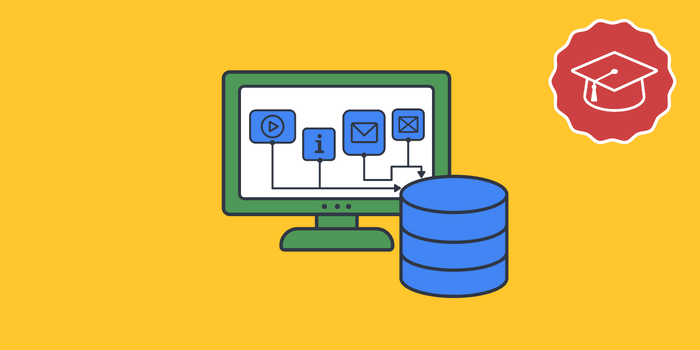
When you do research in an academic setting, you’ll likely encounter academic databases like JSTOR, Scopus, PubMed, or ERIC. In this blog post, we define academic databases and explore what resources can be found in them.
What is an academic database?
Databases are online platforms that contain searchable resources such as journals, articles, ebooks, and data sets. Sources within databases are sometimes also published in print editions, but, if not, many of the resources that you find are printable in formats like .pdf.
Your school’s library contracts with vendors like EBSCO and Proquest to subscribe to databases that you can search to find sources. Databases are costly to maintain and, as a result, access to the sources in them is sometimes limited depending on your institution’s subscription.
Although academic databases are searchable, they differ from Google or Google scholar because the sources within them are properly indexed and vetted through peer-review. This means that academic databases allow for more precise keyword searches and that the sources they contain are credible.
What can you find in an academic database?
The most common types of resources that you’ll find in an academic database are journals and journal articles. Journals are periodicals that feature journal articles and that are published on a regular basis.
Also known as scholarly articles, journal articles are secondary, peer-reviewed sources that you can use as evidence in an academic paper. Additionally, databases may contain ebooks, newspaper or magazine articles, data sets, reports, and other source types.
Most common academic databases
Databases are often subject- or discipline-specific, but there are some that cover a range of topics, such as Academic Search Complete and Scopus. Some databases contain full-text sources, while others include abstracts for sources that you can acquire elsewhere.
Humanities databases
Databases like JSTOR, ProjectMUSE, and the MLA International Bibliography are the most common for research in humanities fields. If you’re a history or literature student, you will likely encounter these at some point in your studies.
Both JSTOR and ProjectMUSE offer full-text sources. The MLA International Bibliography indexes all publications in languages and literature. Although it doesn’t contain full-text sources, many libraries are able to provide links to full-text sources in other databases.
Social sciences databases
If you’re writing a paper on a social science topic, you might find sources in databases like Sociological Abstracts, PsycINFO, and Opposing Viewpoints.
Because social science fields are often interdisciplinary, you may also find relevant social science sources in other types of databases.
Business databases
Some of the most common business databases are Business Source Complete, ABI/INFORM, Mergent, IBISWorld, and Mintel. These offer different resources, depending on what kind of business research your are doing.
Some business databases are best for industry or company research, while others specialize in providing resources for consumer research. If you’re not sure what kind of business research you need to do for your assignment, you might consider contacting your school’s business librarian, if one is available.
STEM databases
STEM is a huge field, so you can expect to encounter a wide range of databases when you undertake research in the sciences, technology, engineering, or math. Some of the most common databases in these subjects include Web of Science, arXiv.org, and ScienceDirect.
Science databases will include a broader range of resources than those in other fields, including source types like data sets and code. If you’re not sure which science database would provide you with the best sources for your topic, ask a librarian or your instructor.
Health sciences and education databases
Like social science fields, both the health sciences and education are interdisciplinary. However, there are two top databases that you will certainly interact with if you’re doing research in either of these subjects: PubMed for health sciences and ERIC for education.
How to cite sources from an academic database
To create the most accurate citations for sources you find in a database, use BibGuru’s citation generator. You can create citations for more than 70 source types in all of the major citation styles.
The BibGuru browser extension for Chrome and Edge can also help you automatically generate citations for online database sources. Correct citations ultimately help you avoid plagiarism.
Frequently Asked Questions about what is an academic database
🧠 What are academic databases used for?
Databases are online platforms that contain searchable resources such as journals, articles, ebooks, and data sets. They are used to find sources for academic papers.
💼 What are the major academic databases?
Some of the major academic databases include Academic Search Complete, Scopus, JSTOR, and PubMed.
👠 What is the difference between Google and an academic database?
Although academic databases are searchable, they differ from Google or Google scholar because the sources within them are properly indexed and vetted through peer-review. This means that academic databases allow for more precise keyword searches and that the sources they contain are credible.
🐝 What do academic databases contain?
The most common types of resources that you’ll find in an academic database are journals and journal articles. Additionally, databases may contain ebooks, newspaper or magazine articles, data sets, reports, and other source types.
🐢 How do I find an academic database?
You can find academic databases through your school library’s website. Most academic libraries organize their database list alphabetically or by subject.


